#research reports for automobile
Explore tagged Tumblr posts
Text
#automotive industry report resellers#reports for transport industry#research reports for automobile#industry analysis for market research
0 notes
Text
Electric Vehicle Fast-Charging System Market to Reach $33.15 Billion by 2033 | BIS Research
As per the BIS Research report, the Electric Vehicle Fast-Charging System Market is projected to reach $33.15 Billion by 2033 from $8.39 Billion in 2023, growing at a CAGR of 14.73% during the forecast period 2023-2033.
#Electric Vehicle Fast-Charging System Market#Electric Vehicle Fast-Charging System Market Report#Electric Vehicle Fast-Charging System Market Research#Electric Vehicle Fast-Charging System Market Forecast#Electric Vehicle Fast-Charging System Market Analysis#Electric Vehicle Fast-Charging System Market Growth#Electric Vehicle Fast-Charging System Industry#Automotive#Automobile#BIS Research
2 notes
·
View notes
Text
0 notes
Text
Driving Success: Navigating the Automobile Industry with Strategic Insights
Introduction:
The automobile industry, a powerhouse of innovation and evolution, continues to shape the global landscape of transportation. We embark on a comprehensive journey through key aspects of the automobile sector, analyzing industry trends, market dynamics, and strategies for successful business entry.
Unveiling the Automobile Industry: A Holistic Overview
In the first section, we provide readers with a broad understanding of the Automobile Industry. From its historical roots to the present, explore how the industry has transformed, adapting to technological advancements, environmental concerns, and shifting consumer preferences.
Navigating Sectors: The Complex Web of the Automobile Industry
Delve into the intricacies of the various sectors that compose the Automobile Industry. From manufacturing and design to marketing and aftermarket services, this section unravels the layers of the automobile sector, showcasing its multifaceted nature.
Analyzing the Automobile Industry: Trends and Insights
Embark on a journey of discovery as we conduct an Automobile Industry Analysis. Explore the latest trends, technological breakthroughs, and market dynamics that are steering the industry toward the future, providing businesses and enthusiasts alike with valuable insights.
Driving the Market: Understanding the Automobile Market Dynamics
Shift gears and explore the nuances of the Automobile Market. From consumer behavior to economic influences, this section dissects the factors that drive market demand and supply, shaping the ever-changing landscape of automotive commerce.
The Competitive Race: Unpacking Automobile Market Share Trends
Zoom in on the competitive aspect with a focused exploration of Automobile Market Share trends. Understand how industry giants and emerging players vie for market dominance, and how market share dynamics influence business strategies and consumer perceptions.
Sizing up the Automobile Market: Exploring Magnitude and Impact
Take a macroscopic view of the industry with a discussion on Automobile Market Size. Explore the sheer scale of the market, its economic impact, and the global interplay of forces that contribute to its continuous expansion.
Crafting the Roadmap: Successful Automobile Business Entry Strategies
Concluding the journey, we provide a roadmap for entrepreneurs and businesses looking to enter the industry with the section on Automobile Business Entry Strategy. From market research to strategic planning, discover the key elements for a successful and sustainable entry into the competitive world of automobiles.
Conclusion:
In the ever-evolving world of automobiles, staying ahead requires a nuanced understanding of the industry's past, present, and future. This article aims to be a comprehensive guide for enthusiasts, industry professionals, and aspiring entrepreneurs, offering valuable insights into the intricacies of the automobile industry and strategies for navigating its diverse landscapes.
0 notes
Photo
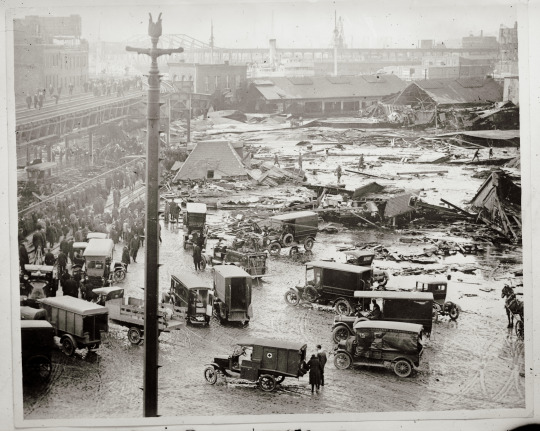


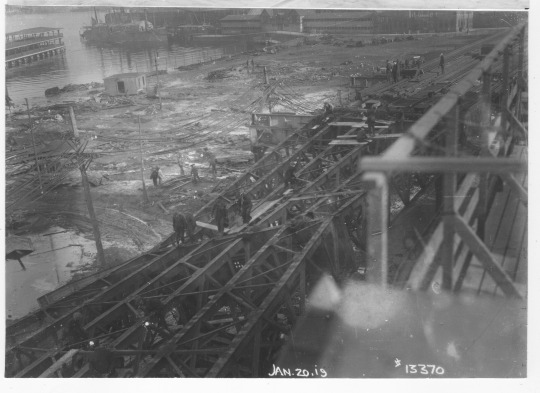

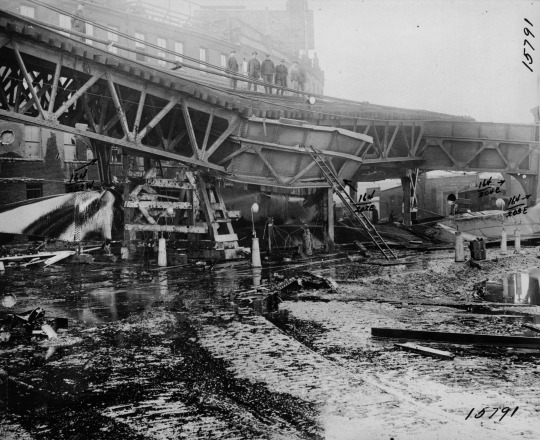
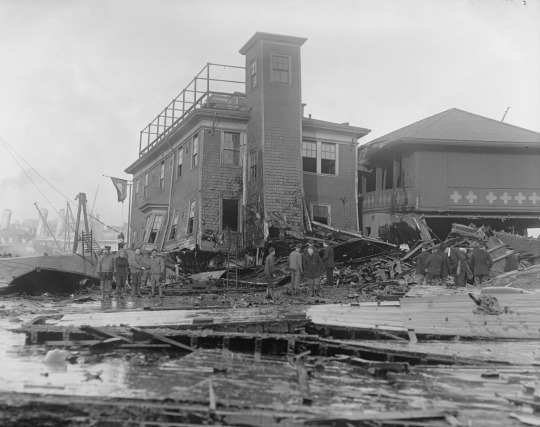
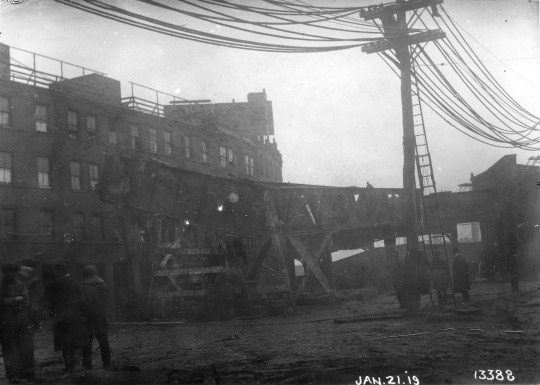
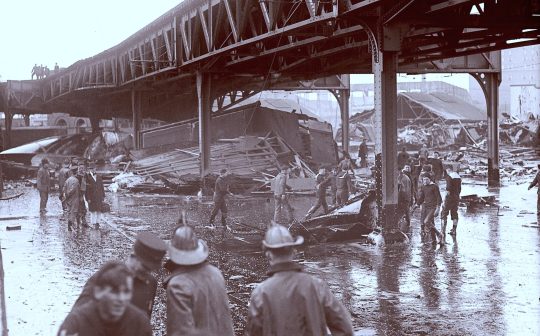
The Great Molasses Flood was a disaster in Boston that occurred after a storage tank collapsed on January 15, 1919, sending more than two million gallons (eight million litres) of molasses flowing through the city’s North End. The deluge caused extensive damage and killed 21 people.
The tank was built in 1915 along Boston’s waterfront on Commercial Street, opposite Copp’s Hill. It was operated by the Purity Distilling Company, a subsidiary of United States Industrial Alcohol (USIA). At the time, industrial alcohol—then made from fermented molasses—was highly profitable; it was used to make munitions and other weaponry for World War I (1914–18). The tank’s immense size reflected the demand: it measured more than 50 feet (15 metres) high and 90 feet (27 metres) in diameter and could hold up to 2.5 million gallons (9.5 million litres) of molasses. Built quickly, the tank was problematic from the start, leaking and often emitting rumbling noises. Nevertheless, it continued to be used, and after the war’s conclusion USIA focused on producing grain alcohol, which was in high demand as prohibition neared passage.
At approximately 12:30 PM on January 15, 1919, the tank burst, releasing a deluge of “sweet, sticky death.” According to reports, the resulting wave of molasses was 15 to 40 feet (5 to 12 metres) high and some 160 feet (49 metres) wide. Traveling at approximately 35 miles (56 km) per hour, it destroyed several city blocks, leveling buildings and damaging automobiles. Although help arrived quickly, the hardening molasses made rescue efforts difficult. In the end, 21 people were killed, many of whom were suffocated by the syrup, and approximately 150 were injured. In addition, the Boston Post noted that a number of horses had “died like so many flies on sticky fly paper.” Clean-up efforts lasted for weeks, and Boston reportedly continued to smell like molasses for years afterward.
Numerous lawsuits were filed in the wake of the disaster. While victims alleged that the tank was not safe, USIA claimed that it had been sabotaged by “evilly disposed persons.” In 1925, however, it was ruled that the tank was unsound, and USIA was ordered to pay damages. In addition, the disaster resulted in stricter construction codes being adopted by states across the country.
For years, questions were raised over how such a seemingly benign substance could have caused so many deaths. In 2016, researchers released a study that placed the blame on cold temperatures. While warm weather would have caused the molasses to be less viscous, the winter temperatures made the syrup markedly thicker, severely impeding rescuers.
596 notes
·
View notes
Text
With the Olympic torch extinguished in Paris, all eyes are turning to Los Angeles for the 2028 Olympics.
The host city has promised that the next Summer Games will be “car-free.”
For people who know Los Angeles, this seems overly optimistic. The car remains king in LA, despite growing public transit options.
When LA hosted the Games in 1932, it had an extensive public transportation system, with buses and an extensive network of electric streetcars. Today, the trolleys are long gone; riders say city buses don’t come on schedule, and bus stops are dirty. What happened?
This question fascinates me because I am a business professor who studies why society abandons and then sometimes returns to certain technologies, such as vinyl records, landline phones, and metal coins. The demise of electric streetcars in Los Angeles and attempts to bring them back today vividly demonstrate the costs and challenges of such revivals.
Riding the Red and Yellow Cars
Transportation is a critical priority in any city, but especially so in Los Angeles, which has been a sprawling metropolis from the start.
In the early 1900s, railroad magnate Henry Huntington, who owned vast tracts of land around LA, started subdividing his holdings into small plots and building homes. In order to attract buyers, he also built a trolley system that whisked residents from outlying areas to jobs and shopping downtown.
By the 1930s, Los Angeles had a vibrant public transportation network, with over 1,000 miles of electric streetcar routes, operated by two companies: Pacific Electric Railway, with its “Red Cars,” and Los Angeles Railway, with its “Yellow Cars.”
The system wasn’t perfect by any means. Many people felt that streetcars were inconvenient and also unhealthy when they were jammed with riders. Moreover, streetcars were slow because they had to share the road with automobiles. As auto usage climbed and roads became congested, travel times increased.
Nonetheless, many Angelenos rode the streetcars—especially during World War II, when gasoline was rationed and automobile plants shifted to producing military vehicles.
Demise of Public Transit
The end of the war marked the end of the line for streetcars. The war effort had transformed oil, tire, and car companies into behemoths, and these industries needed new buyers for goods from the massive factories they had built for military production. Civilians and returning soldiers were tired of rationing and war privations, and they wanted to spend money on goods such as cars.
After years of heavy usage during the war, Los Angeles’ streetcar system needed an expensive capital upgrade. But in the mid-1940s, most of the system was sold to a company called National City Lines, which was partly owned by the carmaker General Motors, the oil companies Standard Oil of California and Phillips Petroleum, and the Firestone tire company.
These powerful forces had no incentive to maintain or improve the old electric streetcar system. National City ripped up tracks and replaced the streetcars with buses that were built by General Motors, used Firestone tires, and ran on gasoline.
There is a long-running academic debate over whether self-serving corporate interests purposely killed LA’s streetcar system. Some researchers argue that the system would have died on its own, like many other streetcar networks around the world.
The controversy even spilled over into pop culture in the 1988 movie Who Framed Roger Rabbit, which came down firmly on the conspiracy side.
What’s undisputed is that, starting in the mid-1940s, powerful social forces transformed Los Angeles so that commuters had only two choices: drive or take a public bus. As a result, LA became so choked with traffic that it often took hours to cross the city.
In 1990, the Los Angeles Times reported that people were putting refrigerators, desks, and televisions in their cars to cope with getting stuck in horrendous traffic. A swath of movies, from Falling Down to Clueless to La La Land, have featured the next-level challenge of driving in LA.
Traffic was also a concern when LA hosted the 1984 Summer Games, but the Games went off smoothly. Organizers convinced over 1 million people to ride buses, and they got many trucks to drive during off-peak hours. The 2028 games, however, will have roughly 50 percent more athletes competing, which means thousands more coaches, family, friends, and spectators. So simply dusting off plans from 40 years ago won’t work.
Olympic Transportation Plans
Today, Los Angeles is slowly rebuilding a more robust public transportation system. In addition to buses, it now has four light-rail lines—the new name for electric streetcars—and two subways. Many follow the same routes that electric trolleys once traveled. Rebuilding this network is costing the public billions, since the old system was completely dismantled.
Three key improvements are planned for the Olympics. First, LA’s airport terminals will be connected to the rail system. Second, the Los Angeles organizing committee is planning heavily on using buses to move people. It will do this by reassigning some lanes away from cars and making them available for 3,000 more buses, which will be borrowed from other locales.
Finally, there are plans to permanently increase bicycle lanes around the city. However, one major initiative, a bike path along the Los Angeles River, is still under an environmental review that may not be completed by 2028.
Car-Free for 17 Days
I expect that organizers will pull off a car-free Olympics, simply by making driving and parking conditions so awful during the Games that people are forced to take public transportation to sports venues around the city. After the Games end, however, most of LA is likely to quickly revert to its car-centric ways.
As Casey Wasserman, chair of the LA 2028 organizing committee, recently put it: “The unique thing about Olympic Games is for 17 days you can fix a lot of problems when you can set the rules—for traffic, for fans, for commerce—than you do on a normal day in Los Angeles.”
27 notes
·
View notes
Text
Excerpt from this story from Inside Climate News:
California has long had more cars on the road than any other state. As its population exploded in the first half of the 20th century, so did the number of drivers, particularly in Los Angeles. By the 1940s, exhaust from millions of cars, fumes from power plants and a booming oil industry shrouded the famously sunny city in a noxious brown haze that left Angelenos wearing gas masks on days they couldn’t see more than three blocks.
A chemist identified automobile exhaust as the major source of the smog that regularly darkened city skies, laying the groundwork for California to pass the nation’s first tailpipe emissions standards in 1966.
The state has continued to implement the most aggressive air pollution policies in the country. But even as they cut exposure to one of the deadliest components in vehicle exhaust by nearly three-fold statewide over two decades, exposure disparities persisted or increased for people of color and residents of overburdened communities, a new study reports.
California environmental and climate policy has long focused on reducing air pollution for everybody because that clearly has big health benefits, said Joshua Apte, an air quality engineering expert at the University of California, Berkeley, who led the study, published in the peer-reviewed journal Science Advances. Apte and his colleagues wanted to know if state policies designed to address climate change and improve public health in California also reduced air pollution exposure disparities.
The team focused on pollution from vehicles, the largest source of greenhouse gases in California and the primary source of fine particulate matter, or PM2.5, which kills an average of 5,400 residents a year, according to the California Air Resources Board, or CARB. Vehicles release PM2.5 directly from tailpipes and indirectly when byproducts of gasoline combustion form particles through chemical reactions in the atmosphere.
To track the disparate exposures to PM2.5 across a state with nearly 36 million registered vehicles, Apte forged a unique partnership with two agencies under California’s Environmental Protection Agency, CARB and the Office of Environmental Health Hazard Assessment, or OEHHA. CARB provided estimates of mobile emissions by year and vehicle type from 2000 to 2019 at a fine geographic scale. Three scientists from OEHHA, which funded the work, collaborated on the study design and data analysis.
The team used CARB models to track both direct particle emissions and the gases that form atmospheric particle pollution. To understand how cars, light trucks and heavy-duty vehicles contribute to PM2.5 exposures across the landscape, they created a user-friendly tool called ECHO-AIR.
California’s aggressive policies to control vehicle emissions reaped across-the-board benefits, the team found, reducing PM2.5 emissions by 65 percent. Groups that have historically lived near the worst PM2.5 pollution saw the biggest declines in absolute terms, Apte said. But as exposures continued to drop for white residents, disparities in exposure rates held steady or increased for Hispanic, Black and Asian Californians and for residents of “overburdened communities,” where people are disproportionately affected by hazardous pollutants.
The 65 percent decrease from the transportation sector is a “big public health win,” said Alvaro Alvarado, chief of OEHHA’s Community and Environmental Epidemiology Research Branch and a study coauthor. “But the challenge remains that the most polluted are still the most polluted.”
8 notes
·
View notes
Text
Read The Power Broker: Robert Moses and the Fall of New York by Robert Caro. Very good book, worth a read, no wonder it won a Pulitzer.
One of the things about The Power Broker is that the whole way through you marvel at Caro's ability to locate information, to extract what are basically confessions, and so on. But it's only at the end of the book, once you reach the notes, that you realize just how exhaustive the reporting is, and how well-founded. And that's just the research that made it into the book in some form.
As far as the subject matter goes, there's too many interesting nuggets to list them out. Here's one though, only one among an endless number of questions raised or implied by the book.
In the 50s and 60s Americans were universally in the business of ruining their cities by running highways through them. Nowhere were they more in the business of doing this than in New York City, where it basically all occurred under the aegis of Robert Moses, Power Broker.
Now, the thing about running highways through cities is that it is consistently billed as a solution to devastating traffic problems, and is never actually a solution to these problems. The reasons for this are mildly complex and quite well-known these days, but fundamentally boil down to the fact that basic logistic features of the automobile make it non-viable as the primary form of transportation in anything that can remotely be called a city.
In the 50s and 60s, this was only slowly becoming apparent as the demand for automobiles turned out to be bounded only by road capacity, but surely the people in charge of highway planning would have been able to notice induced demand early? Like, they would have had to have seen eventually that they were constantly saying the next highway would solve traffic and that it never did? Did they, though? Moses' projections consistently underestimated future traffic on his bridges, for decades. Was he low-balling statistics that could be sold as demand for or interest in the bridge? If so, why?
The book doesn't say, and in fact doesn't particularly indicate that Robert Moses ever became aware of induced demand, but there are a handful of plausible reasons for him to notice and to then conceal it.
Obviously, the first explanation is that making the phenomenon of induced demand public would have reduced political interest in road construction. This would free Moses to explain the phenomenon to car companies, construction firms and unions, and bankers underwriting his bond issues privately to secure their continued support, without endangering municipal, state, and federal contributions. Perhaps.
Here's another one. Let's say Robert Moses puts together a correct projection of the number of cars going on a planned future bridge of his, and he goes up to federal authorities asking for a substantial contribution to build it. If they continue to believe it's worth building even though it'll obviously be a permanent traffic jam, they might still say "well with these projections, you could take on a significantly larger part of the costs with bond issues and still pay them down pretty quick from tolls".
Even if they hadn't responded that way, Robert Moses' power lied largely in his big pot of unregulated cash. That cash consisted of unexpected revenues from toll bridges, leveraged to the moon as new bonds. If he had accounted for those revenues during planning, he would have to pre-leverage them, and even if he didn't have to spend those new bonds on the bridge and hid them somehow, it would have probably made restructuring the bonds a lot less convenient. His money supply would have been irregular, maybe.
I dunno.
Anyway, car bad, damn near everything other than car good purely by comparison (except probably horse-carriage those seem worse). Public-private partnership is an exciting method of maximizing the rate of corruption involved in a given project. New York City is just absolutely dogshit at electing mayors, holy shit, what is wrong with these people.
12 notes
·
View notes
Text

2024 / 41
Aperçu of the week
“The first casualty, when war comes, is truth”
(Hiram Johnson, progressive US politician, who was Governor of and Senator for California, among other things, on World War 1)
Bad News of the Week
Bavaria is Germany's largest federal state. It is larger than Ireland, for example. Or Denmark. Or Belgium or the Netherlands or Croatia or Switzerland. So it's pretty big by European standards. So if an area is three times the size of Bavaria, that's a lot. And the area of forest that has already been burned in Brazil this year is just as large.
A total of 22.38 million hectares caught fire between January and September, according to a report by the MapBiomas initiative. This corresponds to an increase of 150 percent compared to the same period in 2023. The MapBiomas network consists of universities, non-governmental organizations and technology companies and examines satellite images, among other things, to keep track of environmental developments.
According to the WWF (World Wildlife Fund), the main reason for the fires is deliberate arson. To create grazing land for cattle and arable land for soybean cultivation. Brazil's President Lula da Silva is committed to better protecting the forests and has already achieved success through stricter legislation and prosecution, as well as defining new protected areas.
So why are the figures still soaring? Researchers attribute this to the ongoing drought stress in the Amazon and its neighboring regions, which simply makes it easier to burn and causes it to spread more quickly. At the same time, the second largest tributary of the Amazon, the Rio Negro, is currently drying up, with the water level at its lowest since records began - in 1902!
The first researchers already fear that the first tipping points have also been passed in Brazil. This would be a catastrophe for the planet's largest C02 reservoir, oxygen producer and biodiversity guarantor. And therefore for humanity. It shocks me that there is still political support for fossil fuels. For example, in the current US presidential election campaign, where even Kamala Harris has backed away from her opposition to fracking because it could cost her the swing state of Pennsylvania. Or in Germany, the automobile country, there is talk of “technological openness”. Or Hungary would prefer to buy Russian gas again. Or...
Good News of the Week
The first anniversary of the Hamas attack on Israel. A sad day. Because it brought immeasurable suffering. First for the Israeli victims of the Hamas act of terrorism. And then on practically the entire Palestinian people. Both triggered by the extremism of individual so-called leaders who accept any victim for their ideologically blinded egoism - except themselves. The fact that there are now (one year after the attack!) still Israeli hostages with unclear whereabouts or conditions and at the same time the number of civilian victims of this war - because it is nothing else - is increasing daily is unbearable.
What I find good in this context is the differentiated view among the population here. In Munich, there have already been demonstrations with different points of view, which have certainly sharpened their own different points of view: “365 days - Munich against anti-Semitism” and “Palestine speaks Munich - 365 days of genocide”. The events took place on the same street. And remained peaceful and no clashes were reported. Even if both are too short-sighted, because not every Jew is a Zionist and not every Palestinian is a terrorist. On the contrary: a demonstrator holds up a sign that reads “Palestinians against Jew-hatred”.
Recently, an acquaintance told me about a video conference that a conversation partner from the USA suddenly left. He later apologized: he had been in his home office, his partner and he were of opposing political opinions and there would have been a huge row at home if he had found out what his international colleagues thought of Donald Trump. Namely nothing.
Such fundamental differences, which run like a deep rift even within families, were previously only known to me in the context of corona, when it seemed that vaccination supporters and opponents could no longer build any kind of bridge to each other. In the current political debate, there seem to me to be very few uncompromising hardliners. On both sides. Because there is consensus on one thing: the suffering must come to an end. That of the Palestinian civilian population and that of the Israeli hostages and their families. As long as we can agree on that, there will still be a basic understanding. For the good.
Personal happy moment of the week
We have been struggling with coronavirus and other colds for some time now and are still not really fit. As a result, real life is only taking place on the back burner: work gets done and we don't have the energy for the rest. Work-life balance looks different. But now we've finally been “outside” again. For brunch with friends. And we'll be doing it again a week later. It's nice to meet other people again without it being a meeting.
I couldn't care less...
...that the European Union can and probably will now impose punitive tariffs on Chinese electric vehicles. The official reason is that Beijing is promoting car production with so many subsidies that competition is being distorted. In reality, however, the European automotive industry has simply been asleep. And what's more, the subsidy was invented in the European single market, so to speak.
It's fine with me...
...that a large majority of the CDU state associations (of the conservative Christian Democratic Union) are open to black-green coalitions. A corresponding blanket rejection, as repeatedly demanded by the Bavarian CSU (the sister party Christian Social Union) and its Minister President Markus Söder, is “absurd”. Exactly. In addition, North Rhine-Westphalia, Baden-Württemberg and Schleswig-Holstein are recognized as having good, solid and pragmatic governments. In a coalition of conservatives and the Greens.
As I write this...
...the clean-up work in Florida is progressing after Hurricane Milton plowed through the peninsula like Helene shortly before. The extent of the damage was less severe than feared, even though it could run into the billions and there were also fatalities. What is terrible, however, is how even such disasters are being instrumentalized by the Republicans in the US election campaign to support the dystopian future scenarios that Donald Trump is creating ever more blatantly. Particularly perfidious: the Democrats would take away urgently needed funds from the Federal Emergency Management Agency (FEMA) to “rescue” Americans in order to buy the votes of illegal migrants. Unbelievable: these guys still manage to leave me at a loss for words...
Post Scriptum
Asylum is a hot topic in Europe right now. The increasing popularity of right-wing parties is mainly due to the fact that (too) many believe the propaganda that the entire continent has a migration problem. As a result, even more moderate centrist parties now also have this issue on their radar and in their election manifestos. The lowest common denominator: less immigration is better than more.
It is therefore surprising that the right of asylum is now being extended. But fortunately, justice is blind. The European Court of Justice has now decisively strengthened the protection of Afghan women. It has stated that the repression of the Taliban regime is now so massive that they are generally considered to be persecuted.
They are therefore entitled to asylum in the European Union. In principle and regardless of individual examination and interpretation. Women are systematically discriminated against by the Taliban - simply because they are women. The fact that this discrimination means, among other things, that no woman is even allowed to leave her home without a male escort makes it unlikely that the theory will be put into practice. But for me, this decision alone is a very strong symbol.
#thoughts#aperçu#good news#bad news#news of the week#happy moments#politics#war#truth#brasilia#bavaria#rain forest#forest fires#tipping point#israel#hamas#gaza#Palestine#brunch#tariffs#automotive#the greens#florida#asylum#afghanistan#taliban#donald trump#european union#fema#conservatives
3 notes
·
View notes
Text
Global top 13 companies accounted for 66% of Total Frozen Spring Roll market(qyresearch, 2021)
The table below details the Discrete Manufacturing ERP revenue and market share of major players, from 2016 to 2021. The data for 2021 is an estimate, based on the historical figures and the data we interviewed this year.
Major players in the market are identified through secondary research and their market revenues are determined through primary and secondary research. Secondary research includes the research of the annual financial reports of the top companies; while primary research includes extensive interviews of key opinion leaders and industry experts such as experienced front-line staffs, directors, CEOs and marketing executives. The percentage splits, market shares, growth rates and breakdowns of the product markets are determined through secondary sources and verified through the primary sources.
According to the new market research report “Global Discrete Manufacturing ERP Market Report 2023-2029”, published by QYResearch, the global Discrete Manufacturing ERP market size is projected to reach USD 9.78 billion by 2029, at a CAGR of 10.6% during the forecast period.
Figure. Global Frozen Spring Roll Market Size (US$ Mn), 2018-2029

Figure. Global Frozen Spring Roll Top 13 Players Ranking and Market Share(Based on data of 2021, Continually updated)

The global key manufacturers of Discrete Manufacturing ERP include Visibility, Global Shop Solutions, SYSPRO, ECi Software Solutions, abas Software AG, IFS AB, QAD Inc, Infor, abas Software AG, ECi Software Solutions, etc. In 2021, the global top five players had a share approximately 66.0% in terms of revenue.
About QYResearch
QYResearch founded in California, USA in 2007.It is a leading global market research and consulting company. With over 16 years’ experience and professional research team in various cities over the world QY Research focuses on management consulting, database and seminar services, IPO consulting, industry chain research and customized research to help our clients in providing non-linear revenue model and make them successful. We are globally recognized for our expansive portfolio of services, good corporate citizenship, and our strong commitment to sustainability. Up to now, we have cooperated with more than 60,000 clients across five continents. Let’s work closely with you and build a bold and better future.
QYResearch is a world-renowned large-scale consulting company. The industry covers various high-tech industry chain market segments, spanning the semiconductor industry chain (semiconductor equipment and parts, semiconductor materials, ICs, Foundry, packaging and testing, discrete devices, sensors, optoelectronic devices), photovoltaic industry chain (equipment, cells, modules, auxiliary material brackets, inverters, power station terminals), new energy automobile industry chain (batteries and materials, auto parts, batteries, motors, electronic control, automotive semiconductors, etc.), communication industry chain (communication system equipment, terminal equipment, electronic components, RF front-end, optical modules, 4G/5G/6G, broadband, IoT, digital economy, AI), advanced materials industry Chain (metal materials, polymer materials, ceramic materials, nano materials, etc.), machinery manufacturing industry chain (CNC machine tools, construction machinery, electrical machinery, 3C automation, industrial robots, lasers, industrial control, drones), food, beverages and pharmaceuticals, medical equipment, agriculture, etc.
2 notes
·
View notes
Text
Zero Friction Coatings Market: Charting the Course for Enhanced Performance and Sustainable Solutions
The global zero friction coatings market size is estimated to reach USD 1,346.00 million by 2030 according to a new report by Grand View Research, Inc. The market is expected to expand at a CAGR of 5.6% from 2022 to 2030. Growth can be attributed to the fact that these coatings reduce friction and wear resulting in low fuel consumption and less heat generation. According to the European Automobile Manufacturers' Association, 79.1 million motor vehicles were produced across the globe in 2021 which was up by 1.3% as compared to 2020. Zero friction coatings can extend the time between component maintenance and replacement, especially for machine parts that are expensive to manufacture.

Zero Friction Coatings Market Report Highlights
In 2021, molybdenum disulfide emerged as the dominant type segment by contributing around 50% of the revenue share. This is attributed to its properties such as low coefficient of friction at high loads, electrical insulation, and wide temperature range
The automobile & transportation was the dominating end-use segment accounting for a revenue share of more than 35% in 2021 due to the rapid growth of the automotive industry across the globe
The energy end-use segment is anticipated to grow at a CAGR of 5.7% in terms of revenue by 2030, owing to the excessive wear on the drill stem assembly and the well casing during the drilling operations in the oil and gas sector
In Asia Pacific, the market is projected to witness the highest CAGR of 5.8% over the predicted years owing to the presence of car manufacturing industries in the countries such as Japan, South Korea, and China
For More Details or Sample Copy please visit link @: Zero Friction Coatings Market Report
Several applications in the automobile industry use wear-resistant plastic seals that require zero tolerance for failure and lifetime service confidence. Increasing demand for the product from the automotive industry across the globe for various applications including fuel pumps, automatic transmissions, oil pumps, braking systems, and others is expected to drive its demand over the forecast period.
Low friction coatings can be used in extreme environments comprising high pressure, temperatures, and vacuums. These coatings can provide improved service life and performance thereby eliminating the need for wet lubricants in environments that require chemicals, heat, or clean room conditions. The product containing molybdenum disulfide (MoS2) are suitable for reinforced plastics while those free from MoS2 are suitable for non-reinforced plastics.
Zero friction coatings are paint-like products containing submicron-sized particles of solid lubricants dispersed through resin blends and solvents. The product can be applied using conventional painting techniques such as dipping, spraying, or brushing. The thickness of the film has a considerable influence on the anti-corrosion properties, coefficient of friction, and service life of the product. Its thickness should be greater than the surface roughness of the mating surfaces.
ZeroFrictionCoatingsMarket #FrictionlessTechnology #CoatingInnovations #IndustrialEfficiency #ZeroFrictionSolutions #AdvancedMaterials #SurfaceCoatings #ManufacturingAdvancements #GlobalIndustryTrends #InnovativeCoatings #PerformanceOptimization #MechanicalSystems #SustainableTechnology #IndustrialApplications #FutureTech #InnovationInMaterials #EfficiencySolutions #ZeroFrictionMarket #TechnologyInnovation #EngineeringMaterials
#Zero Friction Coatings Market#Frictionless Technology#Coating Innovations#Industrial Efficiency#Zero Friction Solutions#Advanced Materials#Surface Coatings#Manufacturing Advancements#Global Industry Trends#Innovative Coatings#Performance Optimization#Mechanical Systems#Sustainable Technology#Industrial Applications#Future Tech#Innovation In Materials#Efficiency Solutions#Zero Friction Market#Technology Innovation#Engineering Materials
2 notes
·
View notes
Text

Honestly, computers kill every day. They kind of have to, right? They run so many aspects of our lives, computer glitches happen, machines malfunction, people get hurt or die. We can call those accidental deaths. We (for some reason) operate under the assumption that computers will make mistakes and malfunction, and say that that is okay, it's all part of the Grand Calculus. I say "for some reason" because humans have weirdly lax standards when it comes to general computing reliability, but at least we treat most of these systems as safety-critical systems, which do have higher standards. If you go up the stack a bit, you can find lots of places where computers contribute to people's deaths --- but it's hard to say it directly causes them. Algorithmic credit systems with embedded biases and hospital analytics, for example, make decisions that vastly impact a person's well-being. It's really hard to quantify what the impact of these systems are, but still, it's probably under studied. The cynic in me says that maybe this type of research is strategically underfunded, though it's also possible that a mixture of difficulty and the quandary of choice of where to focus one's efforts has led to us getting poor overall estimates. But I almost feel it should be possible to have a running scoreboard. Going further up the stack, we start getting into the land of autonomous, AI-powered cyberphysical systems. The thing is, there probably are far fewer deaths to speak of here! For example, a Tesla car on autopilot accidentally strikes someone darting through the street at night. Even the larger numbers reported are likely a safer rate than human driving. These are accidental deaths. But the weird thing is, people tend to dissociate this from "robots" or "AI" killing, even though is exactly what happened --- a robot car killed a person. It wasn't a murder, and that's a key difference. It wasn't supposed to do that. But that doesn't mean it wasn't a bad outcome, and probably it is the most common, baddest outcome we've seen so far.
Going further up the stack still, we get to the land of military AI weaponry. People tend to get extremely cagey here, and scared. It's easy to imagine a scenario where weaponry becomes more and more autonomous and more and more decisions are taken out of humans' hands. The biggest issue is not machines overthrowing their human owners, but rather, machines making decisions so quickly that humans don't have a chance to stop them --- even if they're effectively doing the thing that humans asked them to. This could be both accidental killing and purposeful killing. Famously in the 1980s, the U.S. and Russia almost went to nuclear war --- not because either side was actually threatening a strike, but because of a computer glitch. Sun glares led to U.S. computer systems confusing solar radiation with Soviet missiles. A human operator had to make a judgment call, and ultimately decided, no, it doesn't make sense that the Soviets would launch such a strike on America, not at this time, not in this way. It certainly helped that there was always a landline of communication between the two superpowers at the time, in part to make sure that situations like this did not happen. But what happens when this is not the decision of a human, but of a computer, and that system makes a mistake? This can also happen in war, in real-time; a machine with a gun has to decide whether or not to shoot a target. Is it a threat, or a civilian? What happens when it's a rebel, who could be both? There are serious ethical quandaries here. We can make them into AI systems, and if we are really going down this path, we must. At the least, I personally don't think there is anything inherently unethical about AI weapons in war. I'd rather have the machines largely kill each other than to kill human soldiers. And it's even possible, that like with automobiles, they do outperform humans. People don't like the apparent stochasticity that comes with this, and I get that. But I see nothing signaling that this is inherently worse than war as usual, although I do wonder what a cyber attack would mean in a case like this.
People are uncomfortable when you can say that robots can murder people. It was the source of much hullabaloo and debate in San Francisco, recently. There was a report of a drone killing an operator in simulation (simulation!!), and people became concerned. These stoke visions of, well, the terminator. And it worries me that technology creeps into people's lives, sometimes takes those lives away, and if it happens slowly enough, people lose the ability to care. There's already enough run by algorithms in our lives that people do not bat an eye to. It feels like the old adage about the robotic frog in the slowly heated oil bath (or I think that was the gist, anyway). Some people will go all the way up the stack, and worry about "existential risk," real-world analogues of Skynet enslaving or exterminating the globe. But I'll argue, before worrying about that, worry about all these other layers that are already getting people killed first.
People who should know better have a history of worrying about the future. What happens when AI eventually kills someone, they ask, when it's clearly already happened? Drones have clearly already done this. I'd love to see their surprised Pikachu reactions to that detail. I'm not telling you to panic, but don't worry about the future --- worry about the present.
6 notes
·
View notes
Text
Wayne Enterprises' Green Growth Challenge!

"Sustainability isn't just a choice; it's a responsibility we all share. As we navigate the entrepreneurial world, we must remember that our actions today shape the world of tomorrow.
We live in an era where sustainability isn't an option but an imperative. It's the force that drives visionaries and trailblazers to make real, positive change. Just look at Tesla Inc., revolutionizing the automobile industry with sustainable electric vehicles, reducing carbon emissions. Think about The Ocean Cleanup, a venture founded by Boyan Slat, combating ocean pollution by cleaning up the Great Pacific Garbage Patch.
Now, it's your turn to make a difference. Welcome to the Wayne Enterprises' Green Growth Challenge,' where your entrepreneurial spirit meets sustainability.
Task Description: Participants will be given existing startups known for their sustainability efforts and propose strategies to scale them further. Your task is to develop a sustainability-focused strategy to enhance the startup's impact.
Startup Options:
Impossible Foods: Scaling up plant-based meat substitutes to reduce carbon emissions.
Ecolife Recycling: Expanding electronic waste recycling efforts to reduce e-waste.
Grocery Delivery Service (e.g., Instacart, FreshDirect): Making grocery delivery services more sustainable, reducing waste.
Urban Farming Startup (e.g., AeroFarms): Scaling vertical farming to reduce food miles and water usage.
Renewable Energy Startup (e.g., Sunrun): Expanding residential solar panel installations to promote clean energy.
Deliverables:
1. Presentation (PPT): Create a presentation outlining your sustainability-focused strategy. Include startup background, analysis, proposed strategy, implementation plan, and expected impact.
2. Report: Develop a detailed report expanding on the presentation. Include in-depth analysis, research findings, and a clear execution roadmap for the sustainability strategy.
3. Additional deliverables are encouraged.
2 notes
·
View notes
Text







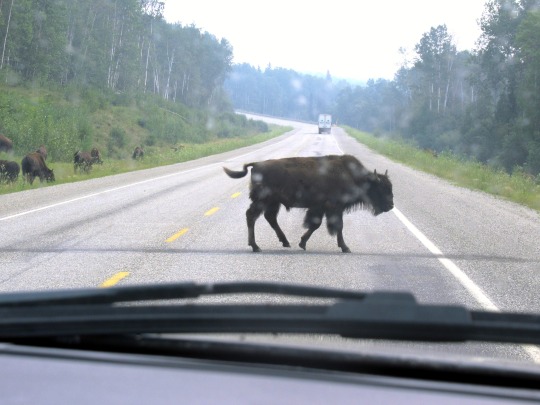






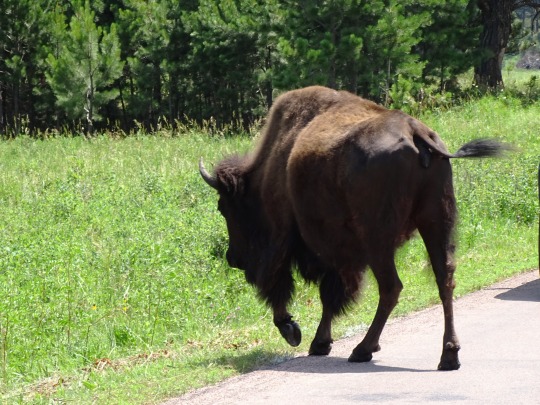

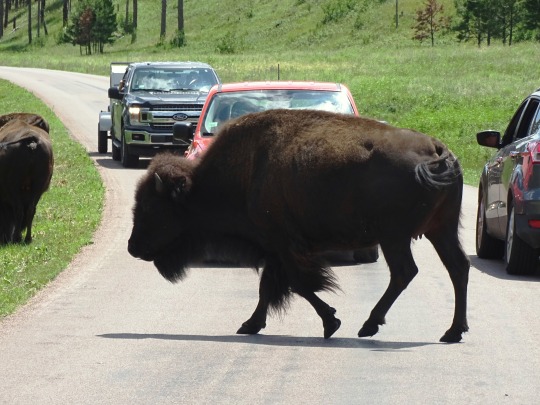










World Animal Road Accident Awareness Day
World Animal Road Accident Awareness Day is on October 10. It’s a fantastic opportunity to help raise awareness of the problem of animals getting hurt on the road and sometimes abandoned without assistance or much care. It’s a day to urge people to consider what they would do if they hit an animal while driving. It is hoped that through education and action, fewer animals will suffer, and more animal owners will be spared the anguish that traffic accidents entail. Driving with extra care and attention will save many lives, but accidents will happen — even to the most animal-loving drivers.
History of World Animal Road Accident Awareness Day
No animal deserves to be dumped on the side of the road after a car accident. Every day, 630 cats are killed in car accidents. Only 25% of these incidents will be deadly, leaving 75% with a possibility of survival, but only if the animal receives assistance. Many people attempt to educate the public on what to do if they hit an animal on the road. Fortunately, the Cats Matter Organization has made raising awareness of the issue easier. Cats Matter is committed to this worthwhile cause and is the driving force behind Animal Road Accident Awareness Day. Annual road fatalities are expected to kill 100,000 foxes, 50,000 badgers, 50,000 deer, 30 million birds, and hedgehogs, which formerly headed the fatality list with 29% of them killed by automobiles and are now critically endangered.
Authorities estimate the accurate death rate to be about 70 million animals based on a statistical study of those that may have gone undetected. Highways England claims that 2,143 dead animals were discovered on about 4,300 miles of roadway — less than 1% of the U.K.’s entire road network.
The Road Traffic Act 1988 in the United Kingdom specifies that drivers must notify the police if they strike any of the following animals: dogs, horses, cattle/cows, pigs, goats, sheep, donkeys, or mules. Although there is currently no requirement to record all animal deaths on roadways, police suggest drivers contact the owner of domestic animals, such as cats, to alert them of the situation. Whatever the regulations, the most important thing is that the animal is provided with the best opportunity possible if it survives the initial impact.
Today highlights the fact that many animals are disregarded for no other reason than a motorist did not value their life enough to give them a second consideration.
World Animal Road Accident Awareness Day timeline
Early 20th Century
The Beginning
Roadkill, almost non-existent before the introduction of mechanical transportation, is related to growing automotive speeds.
2007
Insects are also in significant danger
According to research, insects are also in significant danger of becoming roadkill; insect roadkill is related to vehicle density.
2009
Roadkill Observation Systems
In the United States, statewide roadkill monitoring systems are put in place, with hundreds of observers reporting roadkill on a website.
2020
First World Animal Road Accident Awareness
Cats Matter launches World Animal Road Accident Awareness Day, which takes place on October 10th for the first time.
World Animal Road Accident Awareness Day FAQs
Which animal is responsible for the most traffic accidents?
Deer are responsible for around 260,000 collisions each year. More than 150 people are killed in these crashes.
What kinds of animals are discovered on the road?
Squirrels, birds, cats, dogs, rabbits, raccoons, skunks, turtles, and coyotes are the most common animals observed on highways.
How can I avoid colliding with animals while driving?
Keep an eye on your surroundings. If you are traveling in the rural countryside, thickly forested regions, or near bodies of water such as ponds, lakes, or rivers, take additional precautions and use your horn to scare the animals.
How to Observe World Animal Road Accident Awareness Day
Use social media to persuade others: Share your experience online to encourage others to commit to driving safely. Use the hashtag #AnimalRoadAccidentAwareness to convince individuals to take a personal pledge to drive carefully.
Immediately see a veterinarian: If you accidentally strike or locate an injured domestic cat on the street, take it to the nearest veterinarian, and you will not be penalized. The animal will be given the necessary care and scanned for a microchip, which allows the owner to be contacted.
Drive safely! Driving safely and improving your driving skills is an excellent way to commemorate the day. Learn about traffic safety precautions and other suggestions.
5 Facts About Animal Car Accidents
The majority occur in the fall:This is a mating and hunting season, and deer are most active at this time, thus they tend to wander outside their typical range.
Sunset and midnight are the peak hours: Keep in mind that animals also wander on the road before and after the sun rises, making all these high-risk times for animal-vehicle collisions.
Big animals rarely cross the road alone: If you encounter a deer while driving, expect to see numerous others nearby.
It’s become a big problem for Canada: Every hour, four to eight big animal-vehicle collisions occur in Canada.
One to two million collisions happen: Every year in the U.S., an estimated one million to two million collisions between motor vehicles and big animals such as deer occur, resulting in 200 human deaths, 26,000 injuries, and at least $8 billion in property damage and other expenditure.
Why World Animal Road Accident Awareness Day is Important
It raises awareness for a significant cause: One of the main reasons we observe Animal Road Accident Awareness is to emphasize the hazards of driving while distracted. With almost 1,000 animal deaths caused by traffic accidents each year, increased awareness urges individuals to take extra measures.
It emphasizes the importance of preventive interventions: This day educates individuals on how to handle a traffic accident if they strike an animal while driving. There are preventative methods to help reduce the danger of animals getting wounded, as well as guidance on what to do if an animal gets away, roadside first aid, and much more.
It saves lives: Not only are our lives important, but so are the lives of animals. It can assist to change the destiny of animals that have not yet landed in this situation.
Source
#Yukon#Canada#wildlife#summer 2023#wood bison#buffalo#caribou#bighorn sheep#Custer State Park#South Dakota#USA#2019#deer#racoon#wild horse#Iguana#Florida Scrub Lizard#World Animal Road Accident Awareness Day#10 October#WorldAnimalRoadAccidentAwarenessDay#never had an accident#animal#travel#original photography#vacation#tourist attraction#landscape#countryside#Jasper National Park#elk
4 notes
·
View notes
Text
Inverted Squeeze Bottle Market Insight | Outlook | Growth Analysis Report 2030
Inverted Squeeze Bottle Market Report has recently added by Value Market Research, this surveillance report establishing the facts based on current scenarios, historical records from 2022 to future forecast upto 2030. This report explicit data of various outlook such as market share, size, growth rates, and industry opportunities and offering an economical advantage for business success. It furnish the 360-degree overview of the competitive landscape of the global industries. Porter’s Five Forces Model analysis has been used to understand the industry’s structure, strength, weaknesses, opportunities, threats and challenges in front of the businesses. Moreover, the report also highlights a sudden occurrence of COVID 19 impact on Inverted Squeeze Bottle market to improve future capacities and other developments.
The research report also covers the comprehensive profiles of the key players in the market and an in-depth view of the competitive landscape worldwide. The major players in the inverted squeeze bottle market include Genesis Industries, Inc., IonWays, LLC, Midland Manufacturing Company, Inc., Kyoraku Co., Ltd., The Original Squeeze Company, Suzhou Innovation Packaging Materials Co.,Ltd, Illing Company, Inc., Kaufman Container Company etc. This section consists of a holistic view of the competitive landscape that includes various strategic developments such as key mergers & acquisitions, future capacities, partnerships, financial overviews, collaborations, new product developments, new product launches, and other developments.
Get more information on "Global Inverted Squeeze Bottle Market Research Report" by requesting FREE Sample Copy at https://www.valuemarketresearch.com/contact/inverted-squeeze-bottle-market/download-sample
Market Dynamics
The growing utilization of squeeze bottles in several industries such as food, drinks, healthcare, and personal care, pharmaceuticals, and so on is the major factor driving the inverted squeeze bottle market. The huge benefits are associated with squeeze bottles, such as it leaves less waste, Better control of food quantity, Easy fit into refrigerator door shelves, and require less space in the refrigerator, which might create high market demand in the coming years across the food industry. The rising popularity of fast food and Italian food like pasta and pizza among consumers across the globe is positively impacting the inverted squeeze bottle market’s growth. Moreover, the rapidly growing food and beverage industry across the globe is likely to create lucrative growth opportunities for key players of the Inverted squeeze bottle market in the coming years.
The research report covers Porter’s Five Forces Model, Market Attractiveness Analysis, and Value Chain analysis. These tools help to get a clear picture of the industry’s structure and evaluate the competition attractiveness at a global level. Additionally, these tools also give an inclusive assessment of each segment in the global market of inverted squeeze bottle. The growth and trends of inverted squeeze bottle industry provide a holistic approach to this study.
Browse Global Inverted Squeeze Bottle Market Research Report with detailed TOC at https://www.valuemarketresearch.com/report/inverted-squeeze-bottle-market
Market Segmentation
This section of the inverted squeeze bottle market report provides detailed data on the segments at country and regional level, thereby assisting the strategist in identifying the target demographics for the respective product or services with the upcoming opportunities.
By Closure Type
Flip Top Cap
Plug Orifice Cap
Screw Cap
Others
By Material Type
Polyethylene Terephthalate (Pet)
Polypropylene (Pp)
High Density Polyethylene (Hdpe)
Others
By Capacity
Up To 100 Ml
100 Ml To 250 Ml
250 Ml To 500 Ml
500 Ml To 750 Ml
Above 750 Ml
By End Use Industry
Food & Beverages
Automobile
Personal Care & Hygiene
Healthcare & Pharmaceutical
Chemicals
Others
Regional Analysis
This section covers the regional outlook, which accentuates current and future demand for the Inverted Squeeze Bottle market across North America, Europe, Asia-Pacific, Latin America, and Middle East & Africa. Further, the report focuses on demand, estimation, and forecast for individual application segments across all the prominent regions.
Purchase Complete Global Inverted Squeeze Bottle Market Research Report at https://www.valuemarketresearch.com/contact/inverted-squeeze-bottle-market/buy-now
About Us:
Value Market Research was established with the vision to ease decision making and empower the strategists by providing them with holistic market information.
We facilitate clients with syndicate research reports and customized research reports on 25+ industries with global as well as regional coverage.
Contact:
Value Market Research
401/402, TFM, Nagras Road, Aundh, Pune-7.
Maharashtra, INDIA.
Tel: +1-888-294-1147
Email: [email protected]
Website: https://www.valuemarketresearch.com
#Inverted Squeeze Bottle Market#Inverted Squeeze Bottle Market Report#Inverted Squeeze Bottle Industry#Inverted Squeeze Bottle Industry Report
2 notes
·
View notes
Text
Bioplastics Market Share, Size, Global Driving Factors by Manufacturers, Growth Opportunities
The global bioplastics market size was USD 10.64 Billion in 2021 and is expected to register a revenue CAGR of 16.8% over the forecast period, according to the latest analysis by Emergen Research. Increase in demand for bioplastics from the automotive industry and demand for compostable plastics to improve soil quality are factors expected to support revenue growth of the market between 2022 and 2030. The automotive industry's primary objective and challenge is to reduce fuel consumption and pollutants by reducing vehicle weight. Bioplastics are effective materials for achieving this purpose. These smart plastics, such as bio-PA and bio-PP, have been embraced by major vehicle manufacturers to reduce environmental impact and provide additional strength to automobile components. Thus, demand for these plastics in the automotive industry owing to their excellent properties is anticipated to create lucrative growth prospects for companies in the market.
Get a sample of the Bioplastics Market report @ https://www.emergenresearch.com/request-sample/169
The global Bioplastics market report covers the analysis of drivers, trends, limitations, restraints, and challenges arising in the Bioplastics market. The report also discusses the impact of various other market factors affecting the growth of the market across various segments and regions. The report segments the market on the basis of types, applications, and regions to impart a better understanding of the Bioplastics market.
Emergen Research has segmented the global Bioplastics market on the basis of type, platform, application, and region:
Type Outlook (Revenue, USD Billion; 2017-2027)
Biodegradable
Polybutylene Adipate Terephthalate (PBAT)
Polybutylene Succinate (PBS)
Polylactic Acid (PLA)
Polyhydroxyalkanoate (PHA)
Starch Blends
Others
Distribution Channel Outlook (Revenue, USD Billion; 2017-2027)
Online
Offline
Application Outlook (Revenue, USD Billion; 2017-2027)
Packaging
Textile
Automotive & Transportation
Consumer Goods
Agriculture
Building & Construction
Others
Request a discount on the Bioplastics Market report @ https://www.emergenresearch.com/request-discount/169
Based on the competitive landscape, the market report analyzes the key companies operating in the industry:
BASF SE, NatureWorks, Biome Plastics, Braskem, Biotec, Total Corbion, Plantic Technologies, Mitsubishi Chemical Holdings Corporation, Novamont SPA, and Toray Industries
Additionally, the report covers the analysis of the key players in the industry with a special focus on their global position, financial status, and their recent developments. Porter’s Five Forces Analysis and SWOT analysis have been covered by the report to provide relevant data on the competitive landscape.
How will this Report Benefit you?
An Emergen Research report of 250 pages contains 194 tables, 189 charts and graphics, and anyone who needs a comprehensive analysis of the global Bioplastics market, as well as commercial, in-depth analyses of the individual segments, will find the study useful. Our recent study allows you to assess the entire regional and global market for Bioplastics. In order to increase market share, obtain financial analysis of each segment and the whole market. Look at how you can utilize the current and potential revenue-generating opportunities available in this sector. We believe that there are significant prospects for energy storage technology in this industry due to the rapid expansion of the technology. In addition to helping you build growth strategies, improve competitor analysis, and increase business productivity, the research will also assist you in making better strategic decisions.
Detailed Regional Analysis covers:
North America (U.S., Canada)
Europe (U.K., Italy, Germany, France, Rest of EU)
Asia-Pacific (India, Japan, China, South Korea, Australia, Rest of APAC)
Latin America (Chile, Brazil, Argentina, Rest of Latin America)
Middle East & Africa (Saudi Arabia, U.A.E., South Africa, Rest of MEA)
To Study Full Bioplastics Market Report, click here @ https://www.emergenresearch.com/industry-report/bioplastics-market
What Questions Should You Ask before Buying a Market Research Report?
How is the Bioplastics market evolving?
What is driving and restraining the Bioplastics market?
How will each Bioplastics submarket segment grow over the forecast period and how much revenue will these submarkets account for in 2027?
How will the market shares for each Bioplastics submarket develop from 2020 to 2027?
What will be the main driver for the overall market from 2020 to 2027?
Will leading Bioplastics markets broadly follow the macroeconomic dynamics, or will individual national markets outperform others?
How will the market shares of the national markets change by 2027 and which geographical region will lead the market in 2027?
Who are the leading players and what are their prospects over the forecast period?
What are the Bioplastics projects for these leading companies?
How will the industry evolve during the period between 2020 and 2027? What are the implications of Bioplastics projects taking place now and over the next 10 years?
Is there a greater need for product commercialisation to further scale the Bioplastics market?
Where is the Bioplastics market heading and how can you ensure you are at the forefront of the market?
What are the best investment options for new product and service lines?
What are the key prospects for moving companies into a new growth path and C-suite?
Request customization on the report @ https://www.emergenresearch.com/request-for-customization/169
Thank you for reading our report. To know more about the customization of the report, please get in touch with us, and our team will ensure the report is suited to your requirements.
About Us:
Emergen Research is a market research and consulting company that provides syndicated research reports, customized research reports, and consulting services. Our solutions purely focus on your purpose to locate, target, and analyse consumer behavior shifts across demographics, across industries, and help clients make smarter business decisions. We offer market intelligence studies ensuring relevant and fact-based research across multiple industries, including Healthcare, Touch Points, Chemicals, Types, and Energy. We consistently update our research offerings to ensure our clients are aware of the latest trends existent in the market. Emergen Research has a strong base of experienced analysts from varied areas of expertise. Our industry experience and ability to develop a concrete solution to any research problems provides our clients with the ability to secure an edge over their respective competitors.
For More Related Reports by Emergen Research
gambling software market: https://www.emergenresearch.com/industry-report/gambling-software-market
functional ingredients market: https://www.emergenresearch.com/industry-report/functional-ingredients-market
space mining market: https://www.emergenresearch.com/industry-report/space-mining-market
acrylic resins market: https://www.emergenresearch.com/industry-report/acrylic-resins-market
drone logistics and transportation market: https://www.emergenresearch.com/industry-report/drone-logistics-and-transportation-market
targeted therapeutics market: https://www.emergenresearch.com/industry-report/targeted-therapeutics-market
airborne intelligence surveillance and reconnaissance market: https://www.emergenresearch.com/industry-report/airborne-intelligence-surveillance-and-reconnaissance-market
small caliber ammunition market: https://www.emergenresearch.com/industry-report/small-caliber-ammunition-market
1 note
·
View note